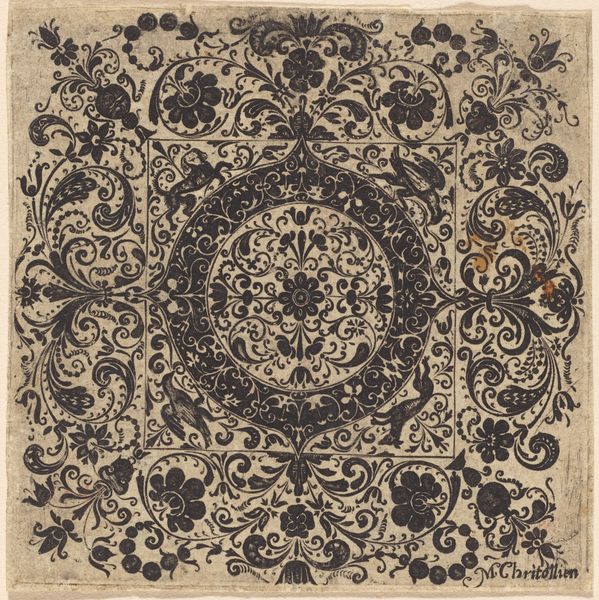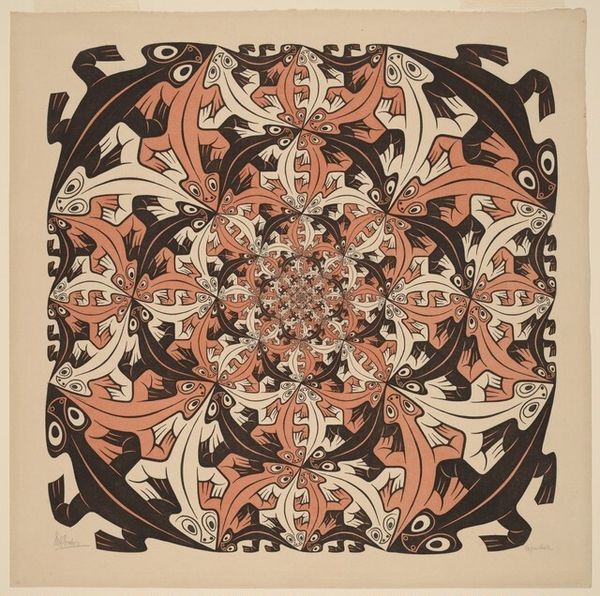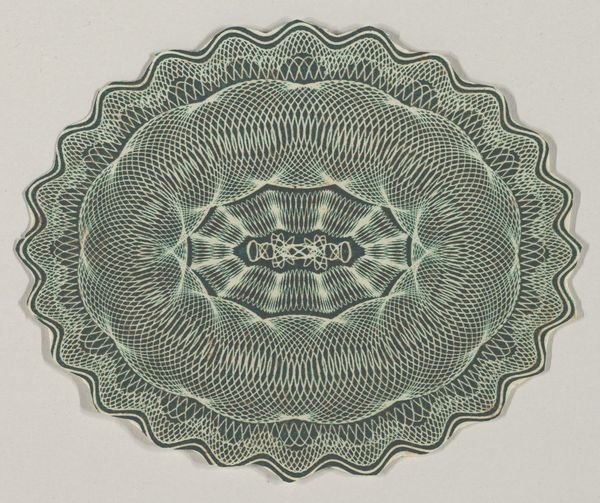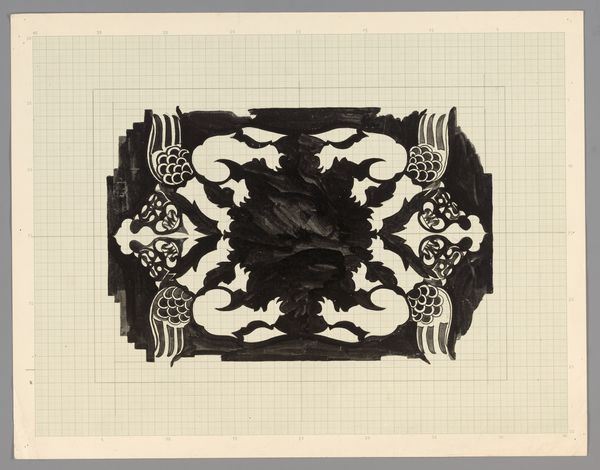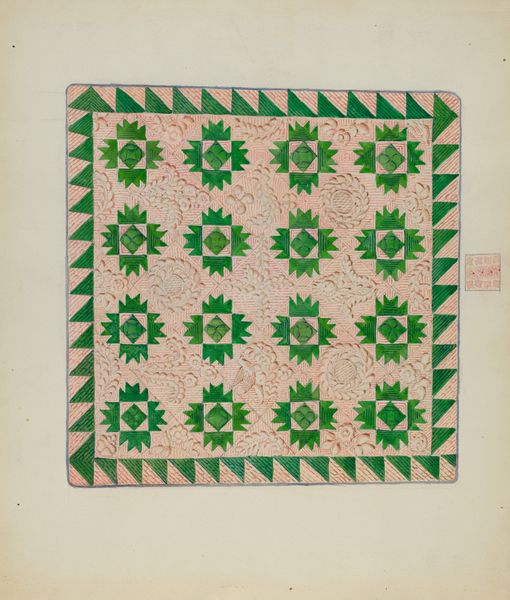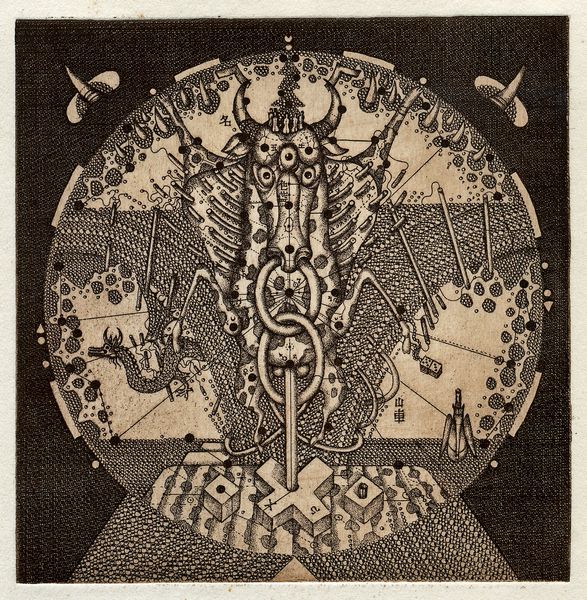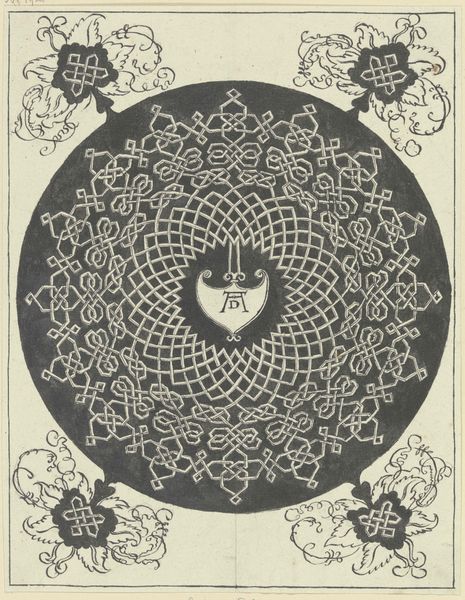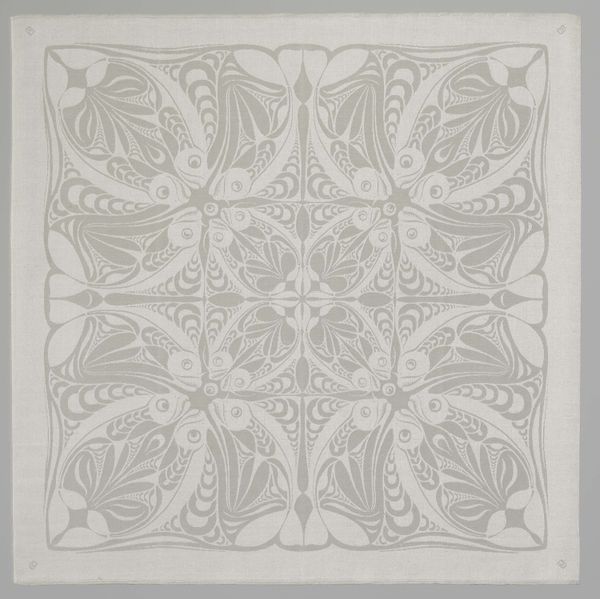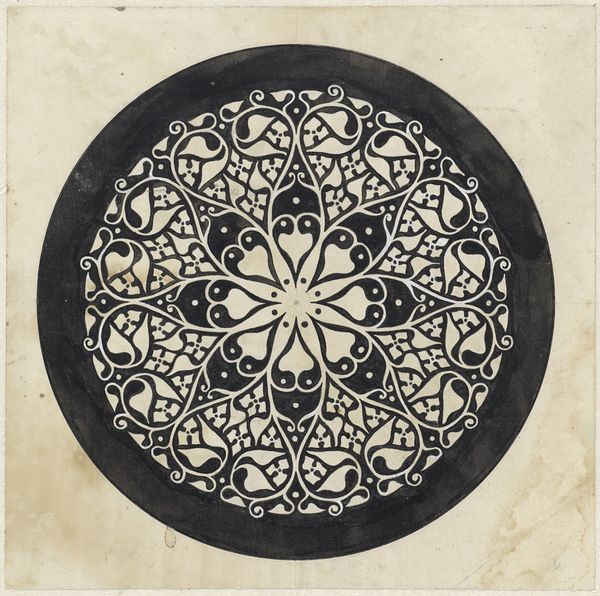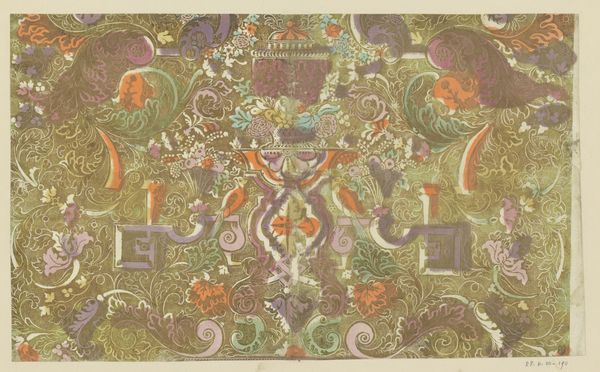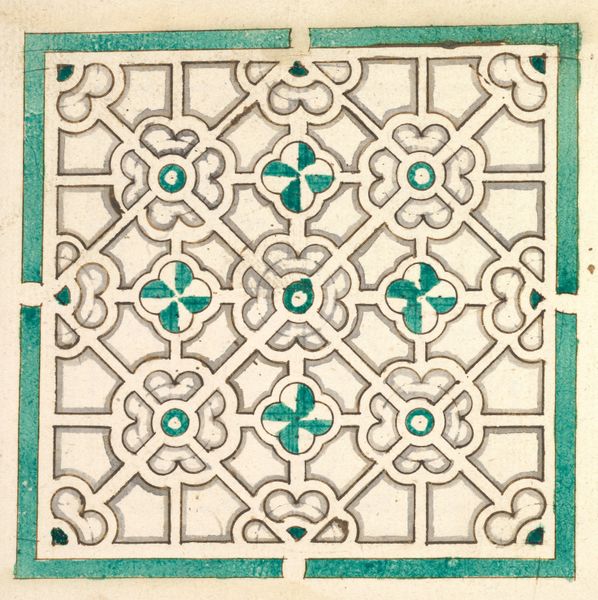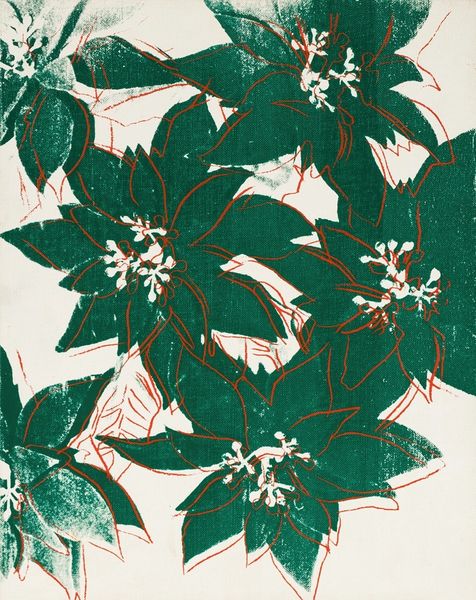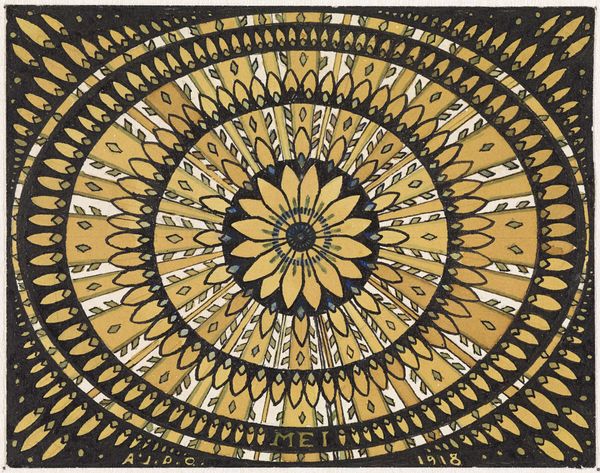
drawing, fibre-art, print, textile, paper
#
drawing
#
fibre-art
# print
#
pattern
#
textile
#
paper
#
folk-art
#
decorative-art
Dimensions: Sheet: 13 9/16 x 13 1/4 in. (34.4 x 33.7 cm)
Copyright: Public Domain
Editor: This is "A Fully Cut Fairy Tale" by Hans Christian Andersen, created in 1864 using paper, fiber art, textile, print, and drawing techniques. It feels both intricate and playful. How do you interpret this work? Curator: I see this work as a powerful act of resistance. In the mid-19th century, Andersen, often confined by societal expectations and his own complex identity, uses the supposedly "feminine" craft of paper cutting to subvert those limitations. The delicate cuts, the integration of text and image, were they not his way of creating his own narrative space? Editor: That's a fascinating way to look at it. I'd only considered it a decorative piece. Is the act of creation itself a statement here? Curator: Precisely! Andersen reclaims a space often relegated to domesticity, infusing it with his creativity. What fairy tales are referenced, and how might they critique the rigid social norms of his time? His layering of medium speaks volumes about embracing art across the social divides in 19th-century Denmark. Editor: So, you're saying the choice of materials and technique are as important as the image itself in understanding the artist's intentions? Curator: Absolutely. It is this combination that transforms a seemingly simple paper cut into a potent symbol of artistic and personal liberation. Considering paper's ephemerality adds another layer to the discussion of identity. What endures? Editor: I hadn't considered it that way, thank you. Now, seeing the layering of the sociopolitical environment within the technique and choice of accessible material…It's inspiring. Curator: Indeed. The way it reflects art historical conventions is so nuanced, that the statement of going against conventions resonates in the socio-historical context.
Comments
No comments
Be the first to comment and join the conversation on the ultimate creative platform.
